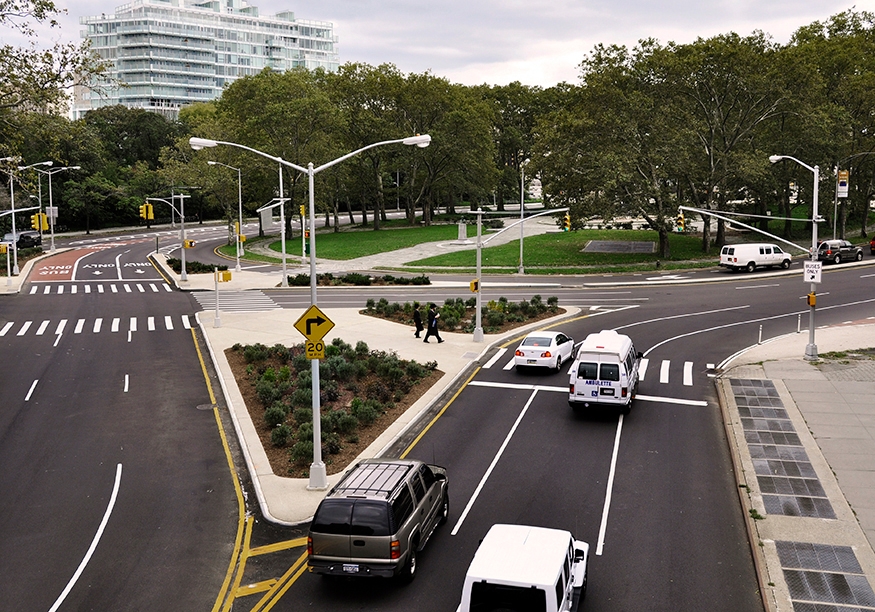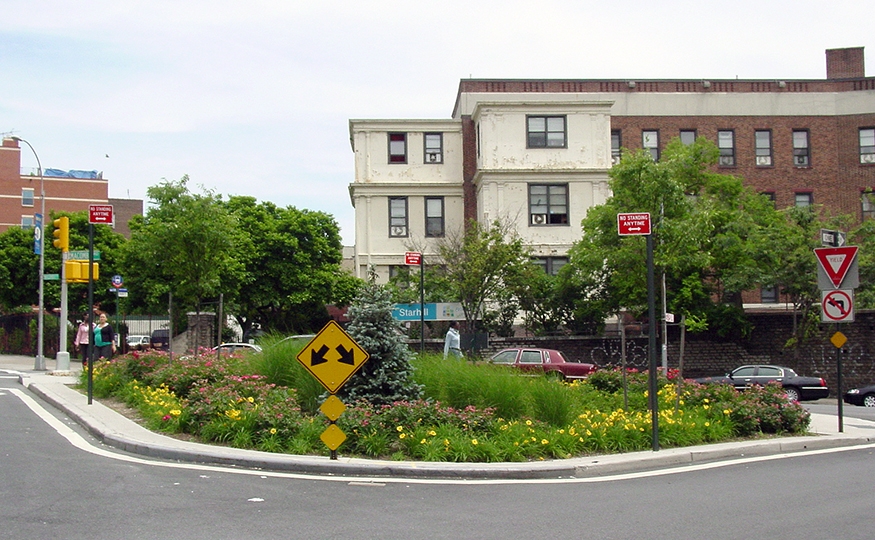A planted area of any size and shape, not just a triangle, within the public ROW that generally separates and/or channelizes traffic. Typically, existing planted triangles are maintained by Parks (through the Greenstreets agreement between DOT and Parks) or another entity, such as a neighborhood group through a maintenance agreement.

Planted triangle. Clear paths are provided for pedestrian circulation: Grand Army Plaza, Brooklyn

Planted triangle. Shorter plants are located near the edge to maintain sightlines: Macombs Road and Grand Avenue, Bronx (Credit: Parks)
Benefits
See Benefits of Plantings in the ROW in the Introduction
- Can incorporate pedestrian amenities such as seating or other furnishings to encourage social and recreational activities, depending on its size and capacity of the maintenance partner
Considerations
- May impact street drainage or require catch-basin relocation
- Safe access to plantings for maintenance workers must be provided; this may require a lane closure permit from DOT and should utilize appropriate safety equipment
- Excluding trees, plantings in triangles not covered under the Parks-DOT Greenstreets agreement require a maintenance agreement
- Stormwater Management Practices not covered under the agreement between Parks, DEP, and DOT require a maintenance agreement
Design
See General Guidelines and Tree Bed
- Design details should be determined on a site-specific basis with Parks, DOT, and, if applicable, DEP
- Consider pedestrian access and circulation; paths should be uninterrupted through triangles
- Consider height and width of shrubs, grasses, and perennials at maturity, and, if necessary, keep taller plants towards the interior and use shorter plants along the exterior of triangle plantings. Choose dwarf species where visibility is a concern
- Plants must not protrude into the roadway; plant densely within the bed to discourage weed growth and trampling
- Consider the use of tree-bed guards around planting areas to discourage trampling of plant material
- Use salt-tolerant, drought-tolerant species
- Consider designing the area to capture stormwater runoff. See Stormwater Management Practices
Plants
See Plant Finder

